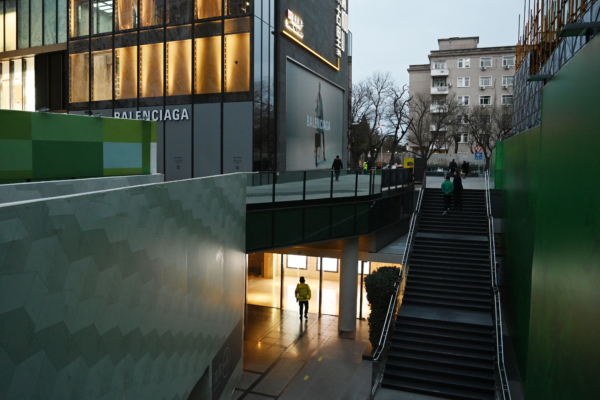In recent years, the Chinese government has been promoting a large-scale subsidy policy for the exchange of old products for new ones in an attempt to stimulate domestic consumption. However, the annual audit reports for the year 2024 released by 26 provinces have revealed instances of fraud and violations in the use of national subsidy funds in six provinces, totaling more than 100 million yuan.
According to a report by “First Financial” on September 9th, the audit departments of 26 provinces recently made public their audit work reports on the implementation of provincial budgets and other financial income and expenditure for the year 2024. The investigation found that six provinces had misappropriated and misused national subsidy funds, exceeding a total of 100 million yuan.
The audit report from Hunan stated that subsidy funds in areas such as car replacement and agricultural machinery scrappage were misappropriated or used in violation of regulations, involving approximately 93.73 million yuan.
The audit report from Heilongjiang revealed that in 13 counties, some distributors used old machinery, sample machines, and poor-quality agricultural machinery through methods such as exchanging old for new and changing nameplates to deceive and obtain subsidy funds. Certain manufacturing enterprises collaborated with 12 distributors from 4 counties, enticing farmers with zero-cost machinery purchases or colluding with them to fabricate false sales records, fraudulently obtaining subsidy funds by selling counterfeit low-quality baling machines.
The audit report from Chongqing indicated that some old-for-new subsidies were fraudulently obtained or misappropriated due to lax policy enforcement. In 2 districts, 3 distributors increased the prices of certain household goods participating in the exchange program during the activity period, affecting the effectiveness of policy implementation. In 8 districts, 15 distributors assisted customers in obtaining or fraudulently misappropriating an old-for-new subsidy of 930,800 yuan through fictitious home transactions and providing false proof materials.
The audit report from Hebei mentioned that the supervisory departments were not strict in their review, resulting in non-compliance or duplicate subsidies totaling 1.52 million yuan in cities such as Shijiazhuang, Cangzhou, and Xingtai. Certain local appliance contracting companies raised prices temporarily, and the selling prices of 3 appliance companies in one city during the activity period were higher than the sales prices of the previous 3-5 months.
The audit report from Shandong revealed that through spot checks, it was discovered that due to lax supervision by the supervisory departments, subsidies totaling 686,200 yuan were unlawfully distributed to 67 consumers for the replacement and upgrade of scrap trucks, medium-sized passenger cars, and new energy vehicles that did not meet the subsidy policy requirements.
The audit report from Gansu mentioned that a few private enterprises engaged in fraudulent sales, deceiving consumers and misappropriating financial subsidy funds for the exchange of old products for new ones.
In March 2024, the Chinese Communist Party initiated the old-for-new consumer goods and equipment upgrade projects, primarily driven by local governments, but the results were minimal. Starting in August this year, the Ministry of Finance allocated approximately 150 billion yuan from special national debt for the old-for-new exchange of household appliances, cars, electric bicycles, and other goods.
The practice of “old-for-new” is akin to borrowing from the future to consume now. Consuming durable goods ahead of time in the current year may reduce expected expenditures on such goods in the following years.
Many consumers have taken to social media to expose the fact that following the implementation of the “old-for-new” subsidy policy in 2024, prices of products on e-commerce platforms and physical stores suddenly increased. The post-subsidy prices were not significantly different from the pre-subsidy prices, and in some cases, even higher. Businesses seized the opportunity to take advantage of the subsidies, leading to more serious issues such as fraud and manipulation.
According to official data, the total scale of national subsidy funds for equipment upgrades and consumer goods exchange in 2024 was around 300 billion yuan, which increased to about 500 billion yuan this year.
Economic commentator Xiao Yi wrote an article in April this year on Dajiyuan, stating that the fundamental issue with the Chinese economy lies in the imbalance between supply and demand. The overcapacity stems from an investment-driven growth model, where industrial policies provide long-term subsidies to companies, stimulating supply expansion. On the other hand, inadequate demand results from imbalanced income distribution, with excessive fiscal and state-owned enterprise incomes leading to insufficient personal income and declining purchasing power. To resolve this contradiction, fiscal subsidies to industries should be reduced, and the proportion of personal income should be increased to stimulate domestic demand. However, the authorities are moving in the opposite direction. They announced that this year, the subsidy scale for the “old-for-new” program would increase from 150 billion yuan in 2024 to 300 billion yuan. Despite the loud slogans, the policy has shown little actual effect, with a significant marginal decline and subsequent lack of momentum.

